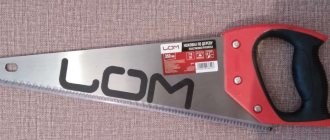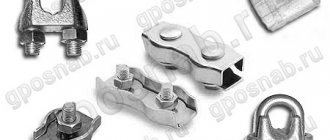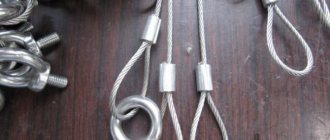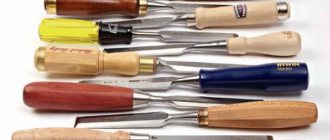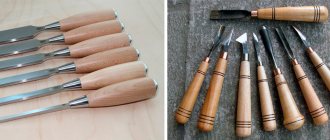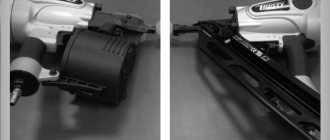A little bit of history
It is impossible to reliably say where and when this tool first appeared, but the first mentions of rakes date back to the third millennium BC. Initially, a rake was any tool that could be used to pick up and hold something. The hand was also called a rake, however, this still occurs today, but previously this term did not have an offensive meaning.
According to historians and archaeologists, there were no plates in Rus', and the family (usually a large one) ate from one common cast iron pot at the same time. First, the head of the family, often the father, took the sample, and after the first spoon he gave the command: “Rob!” and the whole family began to eat. Even now in Russia, villagers may call a fork and spoon a “rake,” which essentially means any cutlery.
The materials for making rakes are: iron, steel, aluminum, plastic, wood. An additional design feature of some rakes is cast all-metal bars with teeth, which greatly strengthens the structure.
How to choose a comfortable rake
In order to competently choose this tool, you need to think about what kind of work it will perform, on what soil and with what application of force. The strength of a tool is determined by the material from which it is made. Wooden and plastic rakes can only be used for light work - removing grass and hay, while metal rakes are used for cultivating soil.
When several people are working with one tool, it is better to purchase a rake with an extendable handle; they are suitable for people of different heights.
A rake with a narrow comb will be a godsend for lovers of flower beds and berry front gardens; they will allow you to penetrate the most difficult areas and improve them.
If there are doubts about the width of the rake, then you need to take into account the planting density of your site; the fewer plantings and the greater the distance between them, the wider the working surface of your tool should be.
If you want to get a tool that you will use for many years, then purchase it in specialized stores where they provide a quality certificate confirming the service life and material of manufacture.
The handle should be tightly connected to the comb. Rarely or frequently set teeth characterize the range of work performed by them; rakes with rare teeth are used for cleaning large debris, while rakes with frequent teeth are used for cleaning small leaves and stones.
Remember that the material of manufacture determines the weight of the tool. If you want a lightweight tool, purchase a rake with an aluminum or wooden handle; its thickness also matters - the standard is about 3 millimeters.
Choose the length of the cutting correctly, taking into account your height. When working with the ground, the handle can reach your shoulder. To collect weeded grass and debris, the length of the handle is equal to your height. The length of the handle should be higher than your height when collecting light grass and leaves.
Teeth
If the blade of the spike is made of metal or various alloys, then its anti-corrosion properties and sharpness are required.
In the case when the teeth are made of plastic, the work for them, accordingly, should be easier.
The main purposes for which people buy rakes:
- Loosening the soil;
- Leveling the land;
- Collection of fallen leaves;
- Working with hay;
- Digging under the roots of weeds;
- Plowing the area.
Summer residents and gardeners, over a long period of using rakes, make their own small ratings of the best tool, depending on the desired purposes:
Types of rakes
Straight rake. The most common garden rake. This is a universal tool for fulfilling most needs in the garden:
- raking leaves and debris;
- breaking clods of earth;
- loosening beds;
- removing tree roots;
- leveling a plowed field, etc.
The teeth of a straight rake are located perpendicular to the handle and slightly curved inward. Straight rakes are produced with different comb widths, from 10 cm to 70 cm. The average width of classic rakes is 40-50 cm. This is due to the nature of the work on the site.
A rake with a narrow comb is used in hard-to-reach areas of the garden, for example, under bushes of seedlings and low-growing trees. Wide rakes are used on large areas and lawns, when removing leaves and debris, because... in one movement they cover a larger area.
A tool with teeth twisted around its axis is a type of straight rake. And it is designed for processing rough soil and breaking up earthen stones. Such a tool is necessary to prepare the soil for planting.
How to choose a piston compressorIn what cases is washing machine repair needed, what should everyone know?
Do-it-yourself wood splitter - drawings, diagrams, dimensions. 120 photos of homemade wood splitters
Straight rakes include those made entirely of wood with a wide base and long cylindrical teeth; they are used for harvesting hay and dry grass in the field. They are very light, because they are made of birch, and the handle is made of pine. They are easy and convenient to work with; sticking of grass and debris is eliminated due to the round and ground surface of the teeth.
Twisted tool
This type of rake is made of thick, durable material. Therefore they are quite heavy.
They are distinguished by high strength due to the twisted shape of the teeth. They very rarely break, so this is the most suitable option for heavy earthworks.
DIY tool box according to drawings: instructions with step-by-step guide- Form for paths - a large selection of forms and a simple method for creating a beautiful and comfortable garden (photo + video)
Do-it-yourself snow blower - we remove snow easily, an overview of designs and types for a suburban area
Rake aerator
An aerator rake can also be classified as a subtype of straight rake, but it is always a metal rake, although they have very interesting design features. Made from hardened steel, plated or pobedite-plated, their teeth are more like sharp, sickle-shaped knives that cut through even the roughest ground (and don't require sharpening).
They resort to their services when even a rake with twisted teeth gives in to the unruly soil. Aerators can be either single-sided or double-sided. Double-sided aerators are called milling aerators. These rakes are sometimes equipped with wheels. Used for cleaning lawns from moss, debris, weeds and leaves. Thanks to the wheels, the knives sink into the ground evenly and thereby facilitate the work.
Lawn rakes have a wide base with teeth. They make it easy to remove large volumes of grass clippings. On the “ridge” the teeth are located very often and special limiter strips are welded above the working surface of the “comb”, under which the collected grass accumulates.
Fan rake
These rakes not only resemble a fan in appearance, but can also be folded, changing the width of the working surface. The peculiarity of this gardening tool is the absence of a “ridge”; every single tooth originates from one point, which actually explains the name “fan”.
Septic tank Topas - detailed review and description of technical characteristicsPetrol mower repair: overview of faults and effective methods for solving them. Photo instructions from the pros!
- Garden composter - which one to choose? Review of the best views for a summer residence (100 photos)
These rakes became extendable only in the 21st century, and before that they had a static appearance. The teeth have a flat or round shape, the creation of this rake goes back to the origins of the development of rock gardens in Japan.
Bully Tools 92630 Poly
The teeth on this rake fan out (photo) and in a semicircle, which gives them greater width. The teeth also make the rake effective at collecting large quantities of leaves. Additionally, the rake features a reinforced fiberglass handle with triple-wall construction for durability, includes reversible support lugs on the teeth to prevent breakage, and features a 90-degree design on the teeth for greater efficiency.
Customers loved how powerful this rake was and could rake a lot of leaves with the wide head and thick handle. However, some customers said that the rake's plastic teeth bent under too much pressure.
The rake had no trouble raking up leaves and pine straw, but pine shavings were getting stuck between the teeth. Although some users complained that the teeth fanned out much wider than a regular triangular leaf rake, making it unwieldy in tighter spaces.
Transformable rake
Gaining popularity among modern gardeners. They are easy to store and transport. With one easy movement you can change the nozzle and thereby the type of activity. These rakes are usually equipped with a quick-release mechanism.
The set includes universal rakes with different widths of the working surface, fan rakes and rose rakes; in addition, to expand the range, they can include attachments: shovels, hoes and baking powder.
When choosing these rakes as your main one, pay close attention to the clamping mechanism; it is better that it is not made of plastic.
Editor's Choice
FISKARS Light 1019606 (from 1686 rubles)
FISKARS Light 1019606. Photo: market.yandex
An interesting model from a popular manufacturer on the market. According to users, this rake is distinguished by its lightness. They are comfortable to hold in your hands and comfortable to work with. The teeth here are made of plastic, but this does not affect the quality of work. The width of the working part is 51 cm. The number of teeth is 25 pieces. This will help you work more efficiently.
Characteristics:
| design | straight |
| tooth material | plastic |
| working part width | 51 cm |
| number of teeth | 25 pcs |
| handle material | metal |
| total length | 172 cm |
| weight | 0.59 kg |
Additional information: lightweight.
Lightweight, comfortable
Brittle teeth
show more
Green Apple GAGV01-81 (from 1216 rubles)
Green Apple GAGV01-81.
Photo: market.yandex Strong metal model. The rake is made in a fan shape. They are not very heavy and pleasant to look at. You need to work with these carefully. The width of the structure can be adjusted, which is very convenient, especially if the tool will be used by different people and in different conditions. The handle here is also reliable, made of metal.
Characteristics:
| design | fan |
| tooth material | metal |
| handle material | metal |
Additional information: width adjustment.
Convenience, functionality
First disclosure can be problematic
show more
GARDENA 3004-20 (from 1199 rubles)
GARDENA 3004-20.
Photo: market.yandex A model with excellent functionality. The rake is made of quality materials. They will last for several years. The kit includes a ripper attachment, which will definitely not be superfluous in your summer cottage. The teeth are made of metal. The width of the working part is 30 cm. The handle here is made of wood.
Characteristics:
| design | straight |
| tooth material | plastic |
| working part width | 30 cm |
| handle material | tree |
| total length | 130 cm |
Additional information - a 9 cm ripper attachment is included.
Convenient, reliable
Working part size
show more
